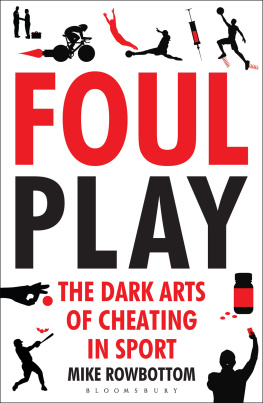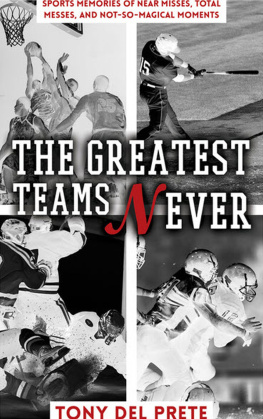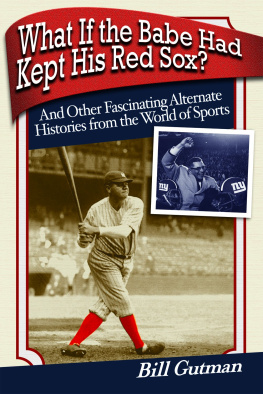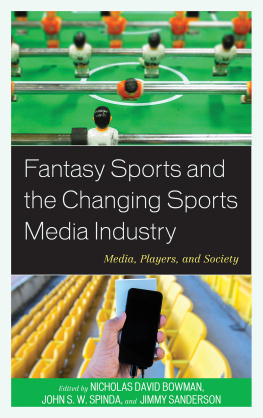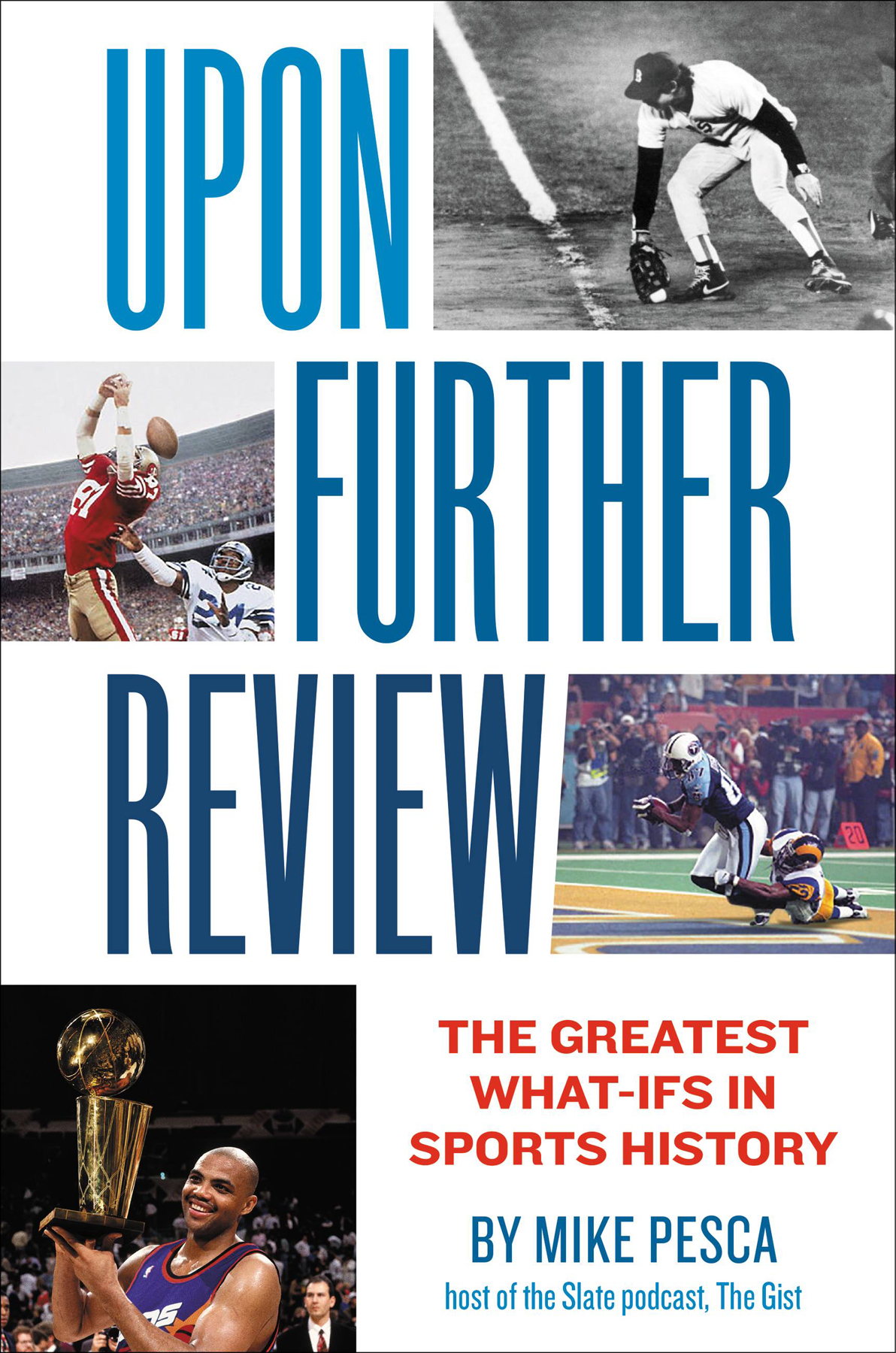Thank you for buying this ebook, published by HachetteDigital.
To receive special offers, bonus content, and news about ourlatest ebooks and apps, sign up for our newsletters.
Compilation copyright 2018 by Mike Pesca
Foreword copyright 2018 by Malcolm Gladwell
Introduction copyright 2018 by Mike Pesca
Cover design by Milan Bozic. Cover copyright 2018 by Hachette Book Group, Inc.
Hachette Book Group supports the right to free expression and the value of copyright. The purpose of copyright is to encourage writers and artists to produce the creative works that enrich our culture.
The scanning, uploading, and distribution of this book without permission is a theft of the authors intellectual property. If you would like permission to use material from the book (other than for review purposes), please contact permissions@hbgusa.com. Thank you for your support of the authors rights.
Twelve
Hachette Book Group
1290 Avenue of the Americas, New York, NY 10104
twelvebooks.com
twitter.com/twelvebooks
First Edition: May 2018
Twelve is an imprint of Grand Central Publishing. The Twelve name and logo are trademarks of Hachette Book Group, Inc.
The publisher is not responsible for websites (or their content) that are not owned by the publisher.
The Hachette Speakers Bureau provides a wide range of authors for speaking events. To find out more, go to www.hachettespeakersbureau.com or call (866) 376-6591.
Names: Pesca, Mike, author.
Title: Upon further review : the greatest what-ifs in sports history / Mike Pesca.
Description: First edition. | New York : Twelve, 2018.
Identifiers: LCCN 2017041897| ISBN 9781455540365 (hardback) | ISBN 9781478911845 (audio download) | ISBN 9781455596997 (ebook)
Subjects: LCSH: SportsAnecdotes. | SportsMiscellanea. | BISAC: SPORTS & RECREATION / Sociology of Sports. | SPORTS & RECREATION / Essays. | SPORTS & RECREATION / History. | HUMOR / Topic / Sports.
Classification: LCC GV707 .P47 2018 | DDC 796dc23
LC record available at https://lccn.loc.gov/2017041897
ISBNs: 978-1-4555-4036-5 (hardcover), 978-1-4555-9699-7 (ebook)
E3-20180301-JV-PC
To Milo, maestro of the hypothetical, Michelle, lovingly guiding us toward the realistic, and Emmett, commenting from the side, Really Dad? Really?
1.
In the fourth round of the 2009 British Open at Turnberry, Tom Watson had a clear lead at the start of the eighteenth hole. He was fifty-nine years old. He needed only a par to win. He hit an approach shot right at the pin. It looked for all the world like it would settle happily near the hole. The gallery gasped in anticipation. Watson must have felt the first thrill of victory. But suddenly and unexpectedly the ball took a strange little bounce and trickled down off the edge of the green. Now Watson needed to get up and down for his par. But his putt was too strong. He bogeyed the eighteenth, leaving himself tied with Stewart Cink, who went on to win the four-hole playoff.
I watched Watson on that final day. That approach shot on the eighteenth hole broke my heart. Watson had birdied 17. He was flying home. He hit a beautiful shot. But it took a strange bounce. Did it hit a stray pebble? An imperfection in the green? Well never know. All that matters is that at the worst possible moment he was unlucky and Stewart Cink was given the gift of his firstand onlymajor.
So what happens if that little pebble isnt there? Watson would have been the oldest player ever to claim a major championship. Jack Nicklaus was forty-six when he won the Masters in 1986. Julius Boros was forty-eight when he won the PGA in 1968. In 2009, Watson was more than a decade older than both of them.
And by the way, lets not limit this conversation to golf. Watson would have been the oldest athlete to win an international competition in any major sport, ever. Ive heard people say that it is unfair to compare golf to other sports, because golf is unusually forgiving to athletes as they age. That is not true: Professional golfers peak in their early thirties, and the odds of winning a major decline precipitously past the age of thirty-five. The age profile of successful golfers is only a shade different from the age profile of successful distance runners or baseball players. Had Watson won at Turnberry, his achievement would have fallen outside the optimal performance range for his profession by a quarter century. I will go further: Had Watson parred the eighteenth, it would have stood as one of the most extraordinary athletic performances of the modern age. But he didnt. He hit a pebble. A few months later, Sports Illustrated picked its Sportsman of the Year. Guess who? Derek Jeter. In case youre wondering, Jeter hit .334 in 2009, and played with his typical wooden immobility in the field.
2.
Upon Further Review is a book about what-ifs. What if the U.S. had boycotted Hitlers Olympics? What if Bobby Fischer had received proper psychiatric help? What if the 1993 Phoenix Suns had answered a bit of fan mail? What if the National League had adopted the designated hitter? What if football had been invented in the twenty-first century instead of in the nineteenth?
At first blush, some of those subjects seem trivial, or at least the kind of thing that you would need to be a hardcore sports fan to appreciate. (I mean: the Phoenix Suns and fan mail?) Do not fall into that trap. Counterfactual history is, in a way that real history is not, a true test of the imagination. But it has a second level as well. The what-if forces us to think. The intuitive paradigm we use in evaluating the march of progress is all too often the evolutionary model: natural selection. We accept the course taken as the fittest option, the one optimized for success. The National League didnt adopt the DH because baseball is better that way, right? But if you tease out the full alternative trajectory, where Bartolo Coln never gets his chance at one glorious dinger, you realize that maybe the way we went wasnt better. It was just an accident.
It happened that way, for whatever random reason, and if the random reason had gone the other way there is an entirely plausible scenario where all of baseball plays by a single rule. Just like Tom Watson. What if the pebble hadnt been there? Then we talk about Watson in 2009 the way we talk about Bob Beamon in 1968, or Michael Jordan against Utah in 1998, or Joe DiMaggios magical streak in 1941. Come to think of it, why dont we rank Watson up there with Beamon, DiMaggio, and Jordan? Why does the presence of an imperfection on the eighteenth green at Turnberrywhich Watson had nothing whatsoever to do withsomehow make him unworthy of being ranked with the all-time greats? When Jeter won Sports Illustrateds Sportsman of the Year in 2009, Watson got robbed: A fifty-nine-year-old coming within one unbelievably bad break of a major is a bigger accomplishment than a thirty-five-year-old waving haplessly at routine ground balls. The counterfactual, in that case, ought to make us angrynot just for Tom Watson but for everyone else who is denied a place in history by the width of a pebble.
3.
Let me run a counterfactual by you. Its a little bit complicatedbut it is precisely that complication that makes it interesting. Its about the slave trade. Most slaves who came to North America camefor obvious logistical and geographical reasonsfrom countries such as Nigeria on the Atlantic coast of West Africa. But lets leave those logistical and geographical reasons aside. What would have happened if the slave trade had been centered on East African countries such as Kenya and Ethiopia?


